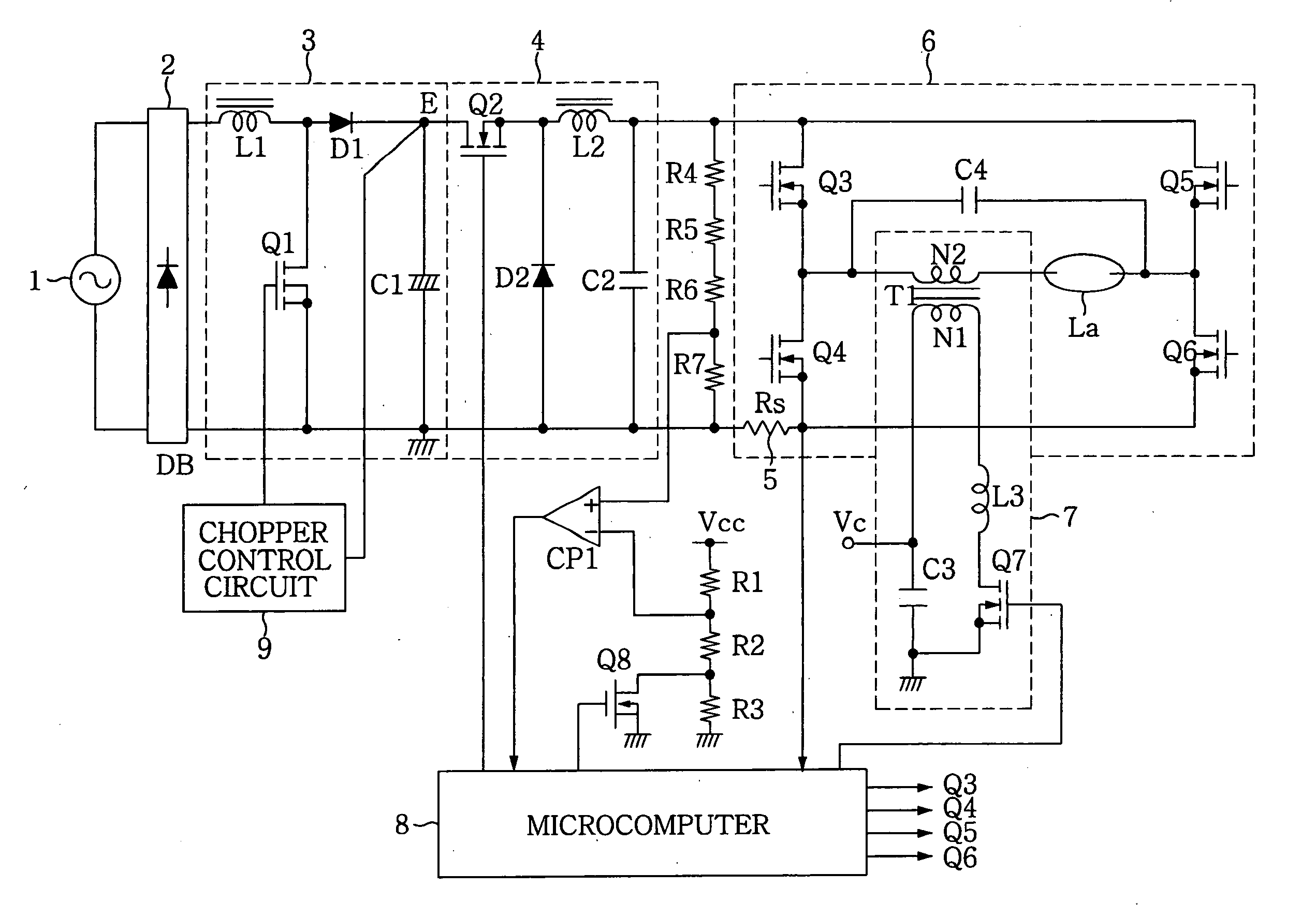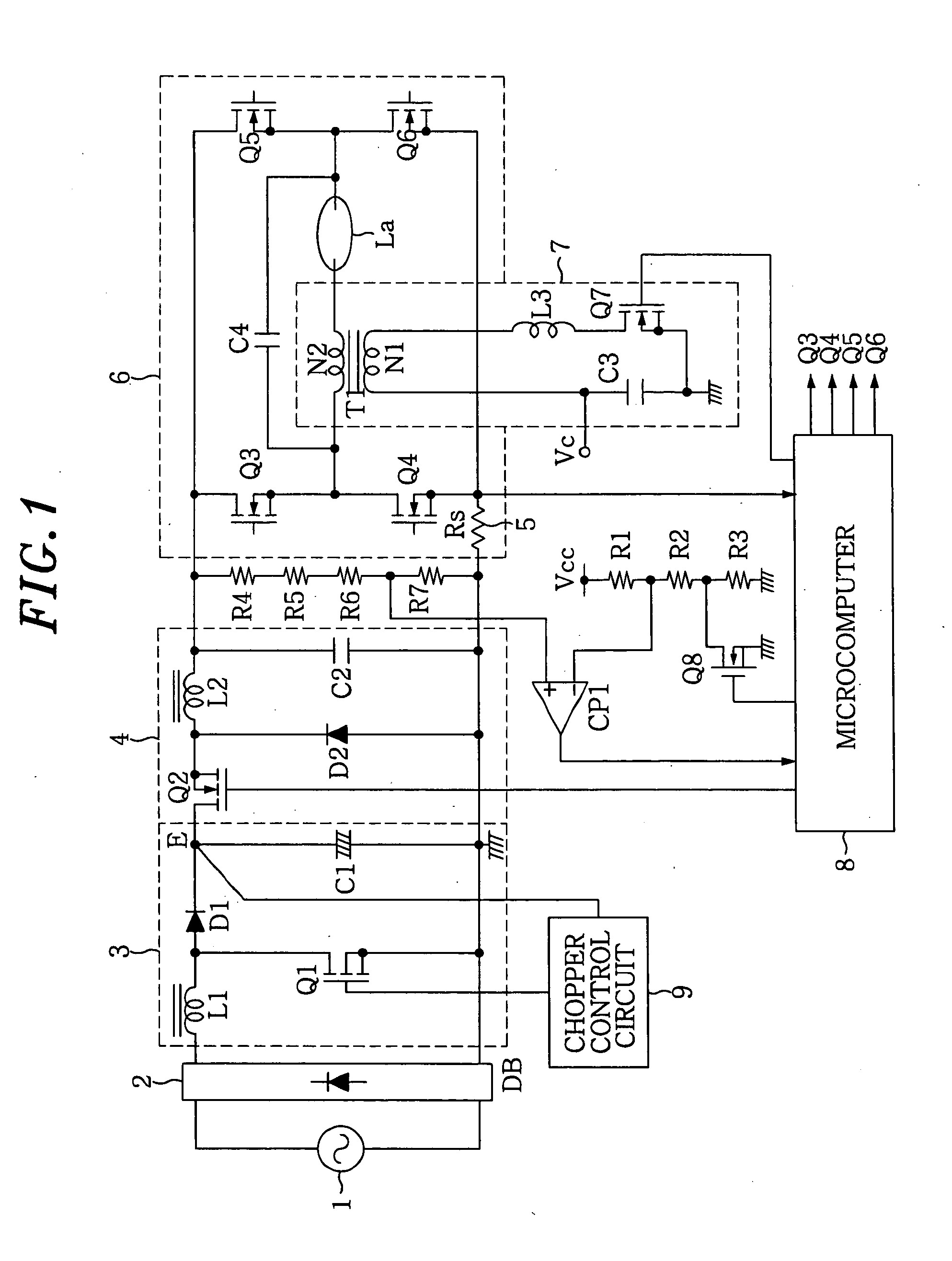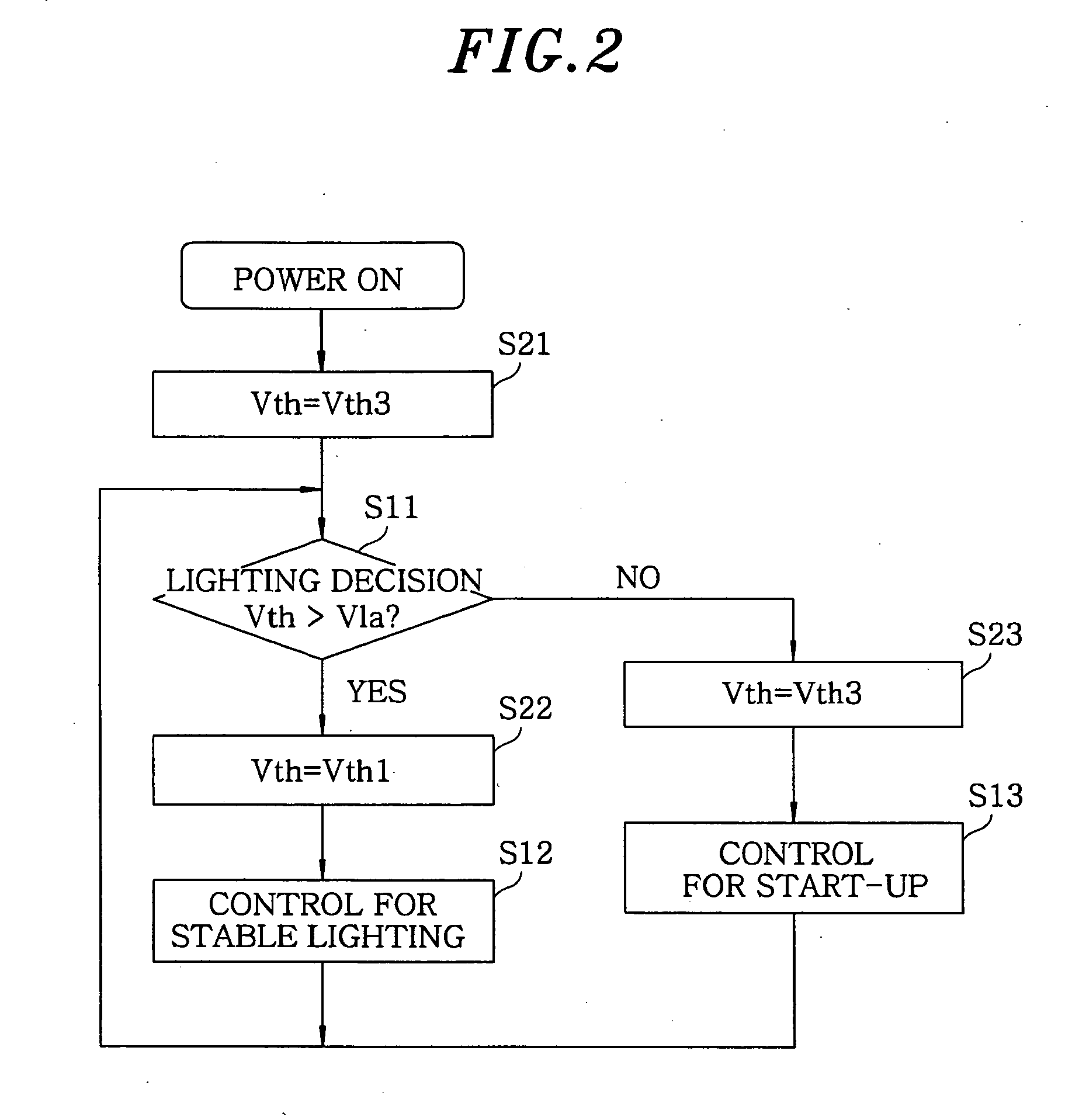High pressure discharge lamp lighting device and luminaire
a technology of lighting device and discharge lamp, which is applied in the direction of electric variable regulation, process and machine control, instruments, etc., can solve the problems of unstable arc discharge, long “start-up phase” time, and lamp flickering or going out, so as to achieve stable state decision and lighting discharge lamps.
- Summary
- Abstract
- Description
- Claims
- Application Information
AI Technical Summary
Benefits of technology
Problems solved by technology
Method used
Image
Examples
first embodiment
[0046]FIG. 1 is a circuit diagram of a first embodiment of the present invention. Hereinafter, a configuration of the circuit will be described in detail. A DC power source E corresponds to a DC voltage of a smoothing capacitor C1, the voltage being obtained by rectifying and smoothing a commercial AC power source 1, and an output voltage of a step-up chopper circuit 3 connected to an output of a diode bridge DB. However, the DC power source E is not limited thereto, but may be a battery or any of commercial DC power source.
[0047]A rectifier 2 which includes the diode bridge DB full-wave rectifies the commercial AC power source 1 to output a ripple voltage. A series circuit of an inductor L1 and a switching element Q1 is connected to an output end of the diode bridge DB. The smoothing capacitor C1 is connected to both ends of the switching element Q1 via a diode D1. The inductor L1, the switching element Q1, the diode D1, and the smoothing capacitor C1 constitute the step-up chopper...
second embodiment
[0061]FIG. 3 is a circuit diagram of a second embodiment of the present invention. This embodiment further includes, in addition to the configuration of the first embodiment, a comparator CP2 for deciding a power source voltage and voltage-dividing resistors R8 to R11, thereby deciding an input power source voltage VE from the DC power source E to the DC / DC converter 4. The input power source voltage VE is divided by a series circuit of the resistors R8 to R11 and then applied as a detected power source voltage Vb to a non-inverting input terminal of the comparator CP2. A reference voltage Vref is applied to the inverting input terminal of the comparator CP2. If Vb2 becomes an L level, which is then decided as the power interrupt phase. By monitoring an output of the comparator CP2 on a regular basis, the microcomputer 8 switches the ON / OFF of the switching element Q8 such that the output to the inverting input terminal of the comparator CP1 may become Vth4 in the power interrupt ph...
third embodiment
[0064]FIG. 5 is a circuit diagram of a third embodiment of the present invention. In addition to the configuration of the second embodiment, a switching element Sw of a power source bias circuit connected to the power source E is turned ON / OFF by a lighting decision signal from the microcomputer 8, thus reflecting a change in the power source voltage VE on the threshold value for making a decision on the lighting state. When the switching element Sw is ON, a bias current that depends on the DC voltage of the DC power source E is supplied to a connecting point of the resistors R1 and R2 via a series circuit of the resistors R12 and R13, to variably control the threshold value used for making a decision on the lighting state based on the power source voltage. That is, this embodiment can be configured in a manner that the threshold voltage is lowered as the power source voltage decreases. The resistor R1 and R2 may be replaced with a single resistor.
[0065]FIG. 6 is a flow chart for ex...
PUM
 Login to View More
Login to View More Abstract
Description
Claims
Application Information
 Login to View More
Login to View More - R&D
- Intellectual Property
- Life Sciences
- Materials
- Tech Scout
- Unparalleled Data Quality
- Higher Quality Content
- 60% Fewer Hallucinations
Browse by: Latest US Patents, China's latest patents, Technical Efficacy Thesaurus, Application Domain, Technology Topic, Popular Technical Reports.
© 2025 PatSnap. All rights reserved.Legal|Privacy policy|Modern Slavery Act Transparency Statement|Sitemap|About US| Contact US: help@patsnap.com



